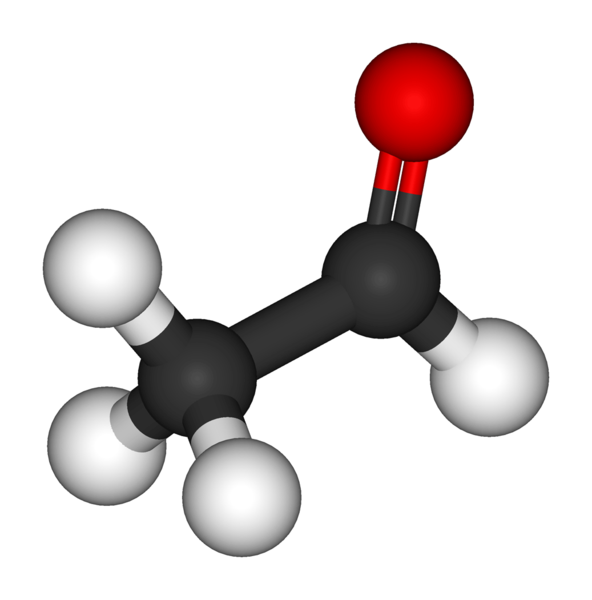ethanal (acetaldehyde)

Ball-and-stick model of an ethanal molecule. Carbon atoms = black, hydrogen = white, oxygen = red.
Ethanal, also called acetaldehyde, is the simplest aldehyde (CH3CHO). It is a colorless, flammable liquid, with a fruity, sweet aroma.
Ethanal is produced by the catalytic oxidation of ethanol or other organic compounds. It can also be produced through the fermentation of sugars by yeasts and other microorganisms. Ethanal is a natural byproduct of the metabolism of alcohol in the human body and is also found in ripe fruit and vegetables, coffee, and other food products.
Ethanal is an important intermediate in the production of acetic acid, which is widely used in the manufacture of plastics, dyes, fibers, and solvents. It is also used in the production of alcohols, such as ethanol and methanol, and in the synthesis of aldehydes and ketones. In the presence of acids it forms the cyclic polymers paraldehyde (CH3CHO)3, and metaldehyde (CH3CHO)4. The former is used as a hypnotic, and the latter as a solid fuel for portable stoves and as a poison for snails and slugs.
Ethanal is highly flammable and can ignite easily, making it a potential hazard in industrial settings. It is also toxic if ingested or inhaled in large amounts. Ethanol is classified as a Category 2 carcinogen by the International Agency for Research on Cancer (IARC), meaning that it is possibly carcinogenic to humans.
Exposure to ethanal can cause a range of symptoms, including dizziness, headaches, nausea, and vomiting. Long-term exposure to high levels of ethanal can damage the liver and cause neurological problems, including tremors and memory loss.


